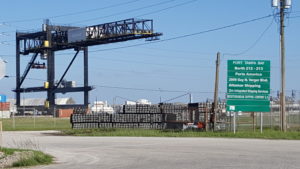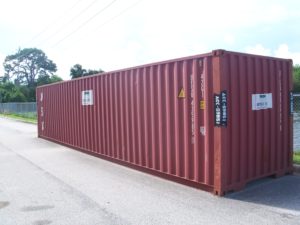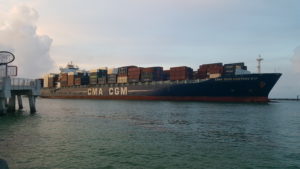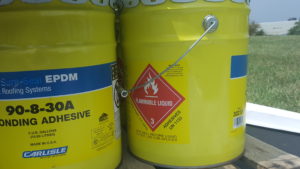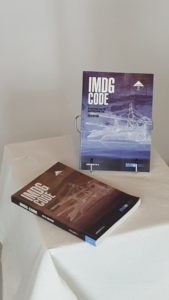Do you have questions about the training required for the transport of dangerous goods by vessel?
…I can help.
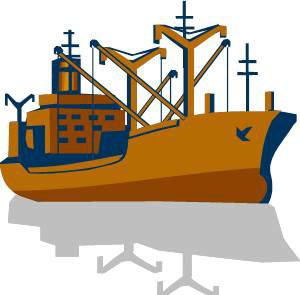
Don’t have time? Check out my summary of IMO Dangerous Goods Training.
If you don’t see an answer to your question here, check out my FAQs at the bottom of this page.
Why is dangerous goods training required by IMO?
It’s the law! Though the IMO itself does not enforce the IMDG Code, it is the responsibility of its Member States to do so. The United States (and 169 other nations) is a member state of the IMO through its treaty commitments with the United Nations. The IMO and the IMDG Code are incorporated by reference into the PHMSA/USDOT Hazardous Materials Regulations at 49 CFR 171.7(v). Also, the IMDG Code is authorized for use – even within the U.S. – by PHMSA/USDOT at 49 CFR 171.22(a). This authorization for use is not unconditional; it is based on certain limitations and restrictions specified in the HMR.
If you ship HazMat by vessel solely within U.S. territorial waters (≤12 nautical miles from shore) then you may have an option to adhere to the Hazardous Materials Regulations of the PHMSA/USDOT or the IMDG Code of the IMO. If the transportation of your hazardous material by vessel takes it beyond 12 nautical miles from a U.S. shore or passes through the territorial waters of another nation, then you must comply with the IMDG Code.
The transportation of a hazardous material by vessel exposes it to unique conditions not found in other modes of transport. Similar to a concern of ICAO/IATA for the transport of dangerous goods by air, a vessel at sea has limited options if its dangerous goods cargo begins to leak or react violently.
From the IMDG Code:
The successful application of regulations concerning the transport of dangerous goods and the achievement of their objectives are greatly dependent on the appreciation by all persons concerned of the risks involved and on a detailed understanding of the regulations. This can only be achieved by properly planned and maintained initial and retraining programmes for all persons concerned with the transport of dangerous goods.
Who is required to receive IMO dangerous goods training?
Training is required for all persons concerned with the transport of dangerous goods by vessel. Shore-based personnel shall be trained in the aspects of the IMDG Code applicable to their job responsibilities. Shore-based personnel (aka: shore-side personnel) include persons who perform any of the following:
- Classify dangerous goods and identify proper shipping names of dangerous goods.
- Pack dangerous goods.
- Mark, label, or placard packages containing dangerous goods.
- Load or unload Cargo Transport Units.
- Prepare transport documents for dangerous goods.
- Offer dangerous goods for transport.
- Accept dangerous goods for transport.
- Handle dangerous goods in transport.
- Prepare dangerous goods loading or stowage plans.
- Load or unload dangerous goods into or from a vessel.
- Carry dangerous goods in transport.
- Enforce or survey or inspect for compliance with applicable rules and regulations.
- Are otherwise involved in the transport of dangerous goods as determined by the competent authority. (In the U.S. the competent authority is the PHMSA/USDOT.)
In short, anyone involved in the preparation for transportation, packaging for transportation, offering for transportation, loading for transportation, or transportation of a dangerous good by vessel requires some form IMO dangerous goods training.
What must IMO dangerous goods training include?
IMO dangerous goods training for shore-based personnel must include the following:
- General awareness/familiarization training. Each person shall be trained in order to be familiar with the general provisions of the IMDG Code. Such training shall include the following:
- A description of the nine (9) different classes of dangerous goods.
- The identification and use of the hazard communication methods: labels, package marks, placards, and the shipping document.
- The use of other documents such as the Container/Vehicle Packing Certificate.
- The requirements for packing, packaging, and packages.
- The segregation and compatibility provisions.
- A description of the available emergency response documents.
- Function-specific training. Each person shall be trained in the specific provisions of the IMDG Code applicable to their job function. e.g. a person who loads packages into a cargo transport unit must receive training on the requirements of Chapter 7.3 of the IMDG Code.
- Safety training (recommended). Commensurate with the risk of exposure in the event of a release and the functions performed, each person should be trained in the following:
- Methods and procedures for accident avoidance.
- Available emergency response information and how to use it.
- General dangers presented by the various classes of dangerous goods and how to avoid exposure to those hazards.
- Immediate procedures to be followed in the event of an unintentional release of dangerous goods.
- Security awareness training. Training should address the nature of security risks, recognizing security risks, methods to address and reduce risks and actions to be taken in the event of a security breach.

Classify dangerous goods and identify proper shipping name:
- Classification requirements, in particular:
- the structure of the description of substances
- the classes of dangerous goods and the principles of their classification.
- the nature of the dangerous substances and articles transported (their physical, chemical and toxicological properties).
- the procedures for classifying solutions and mixtures.
- identification by proper shipping name.
- use of Dangerous Goods List.
Pack dangerous goods:
- Description of hazard classes (classes).
- Packaging requirements:
- type of packages (IBC, large packaging, tank container and bulk container)
- UN marking for approved packagings.
- Segregation requirements.
- limited quantities and excepted quantities.
- Marking and labeling of packages
- First aid measures.
- Emergency response procedures.
- Safe handling procedures.
Mark, label or placard dangerous goods:
- Description of classes (hazard classes).
- Marking, labeling and placarding requirements:
- primary and subsidary risk labels.
- marine pollutants.
- limited quantities and excepted quantities.
Load/unload cargo transport units:
- Documentation
- Description of classes (hazard classes).
- Marking, labeling and placarding.
- Stowage requirements, where applicable.
- Segregation requirements.
- Cargo securing requirements (as contained in the CTU Code).
- Emergency response procedures.First aid measures.
- CSC requirements.
- Safe handling procedures.
Prepare transport documents for dangerous goods:
- Documentation requirements:
- transport document.
- container/vehicle packing certificate
- Competent authorities’ approval.
- waste transport documentation.
- special documentation, where appropriate.
Offer dangerous goods for transport:
- Thorough knowledge of the IMDG Code.
- Local requirements at loading and discharge ports.
- port byelaws
- national transport regulations.
Handle dangerous goods in transport:
- Description of classes (hazard classes) and their hazards.
- Marking, labeling and placarding.
- Emergency response procedures.
- First aid measures.
- Safe handling procedures such as:
- use of equipment.
- appropriate tools.
- safe working loads.
- CSC requirements , local requirements at loading, transit and discharge ports.
- Port byelaws, in particular, quantity limitation.
- National transport regulations.
The training provided by Daniels Training Services is specifically designed for shore-based personnel engaged in the transport of dangerous goods by vessel.
 When must I provide IMO dangerous goods training?
When must I provide IMO dangerous goods training?
Shore-based personnel should receive initial training before engaging in a regulated function. However, an employee may perform a regulated function without first receiving training if such functions are performed under the direct supervision of a trained person. The IMDG Code does not establish a time period for supervised employees to receive initial training.
Nor does the IMDG Code specify a frequency for recurrent training. Only, “the training shall be periodically supplemented with refresher training to take account of changes in the regulations.
However, the IMDG Code does refer to the competent authority (PHMSA/USDOT within the U.S.) and its authority to audit the employer to verify the effectiveness of its training system. In short, the IMO does not specify a frequency for training – initial or recurrent – only that it must be done. The reference to the PHMSA/USDOT refers us back to the training frequency specified in its Hazardous Materials Regulations. There, initial training must be provided within 90 days of employment or new job function (direct supervision by trained and knowledgeable personnel in that time) and recurrent training provided every three years (triennial). Therefore, the training frequency mandated by PHMSA/USDOT must be adhered to for IMO dangerous goods training.
How do I ensure my dangerous goods training meets the requirements of IMO?
The IMDG Code does not mandate any qualifications for the training program or for the instructor who provides it. Instead, the IMDG Code makes it clear it is the responsibility of the employer of the shore-based personnel to determine who will be trained, what level of training is required and the training method to be used. The competent authority (PHMSA/USDOT within the U.S.) may audit the employer to verify the effectiveness of its training program.
Currently – and for the foreseeable future – PHMSA/USDOT does not have any means to review and approve a training program. In fact, it does not even review and approve its own training requirement for HazMat Employees at 49 CFR 172, subpart H. Instead, PHMSA/USDOT Hazardous Materials Regulations make it the responsibility of the HazMat Employer to ensure all of their HazMat Employees are trained and tested as required. This responsibility of the HazMat Employer for compliance with the domestic regulations will also apply to the IMDG Code: it is the responsibility of the employer to ensure the training program is adequate.
PHMSA/USDOT will, of course, conduct audits (i.e. inspections) of your facility and its handling of HazMat/dangerous goods. If it is determined by PHMSA/USDOT that your IMO dangerous goods training is not adequate you will be faced with a violation and possible fines.
That means it is up to you as the employer to ensure the instructor you select has in-depth knowledge of the regulations and can deliver that knowledge to your employees in a manner that they can understand. Please refer to my training testimonials.
Before you contact me, feel free to read the articles I’ve written for my blog. A quick review will show that I am not satisfied to simply comply with the regulations but instead dig deep to truly understand them.
I have 25+ years experience with the applicable regulations as a truck driver, Hazardous Waste Technician, consultant, and training provider. I have spent a lot of that time researching the IMDG Code and assisting companies like yours to comply with them. My resume.
Where can I get more information about the IMDG Code?
- IMO’s website includes some helpful information.
- I use my blog and other social media to share what I’ve learned about the regulations regarding HazMat transportation and the generation, handling, and disposal of hazardous waste.
- Ask me a question!
Frequently asked questions about the IMO and the IMDG Code:
3. What are shore-side personnel or shore-based personnel?
4. Is IMO dangerous goods training required or recommended?
6. What does the IMO consider a dangerous good?
7. What is the competent authority referred to in the IMDG Code?
8. Am I required to have IMO dangerous goods training in order to ship dangerous goods by vessel?
9. Am I required to have IMO dangerous goods training prior to performing a regulated function?
10. Is it possible to transport a dangerous good by vessel without being subject to the IMDG Code?
11. What are U.S. territorial waters?
13. How often is the IMDG Code published?
14. What is the current edition of the IMDG Code?
15. Must IMO training for shore-based personnel be provided by a certified or approved instructor?
1. What is the IMO? The International Maritime Organization (IMO) is the United Nations specialized agency with responsibility for the safety and security of shipping and the prevention of marine pollution by ships. It was created March 17, 1948 and met for the first time in January 1959. It is the only United Nations specialized agency to have its headquarters in the United Kingdom. As of June 2013 it has 170 Member States and three Associate Members. Its objectives are summed up in the IMO slogan: safe, secure and efficient shipping on clean oceans.
2. What is the IMDG Code? The International Maritime Dangerous Goods Code (IMDG Code) is accepted as an international guideline to the safe transportation of dangerous goods by vessel. It was first adopted as a recommendation in 1965 and made mandatory under SOLAS (The international convention for the Safety of Life at Sea) amendments adopted in 2002. One function of the IMO is to ensure the conventions and treaties accepted by its Member States – such as SOLAS and therefore the IMDG Code – are properly implemented. The U.S. is one of these Member States and PHMSA/USDOT is the competent authority responsible for the enforcement of the IMDG Code within the U.S. and its territorial waters.
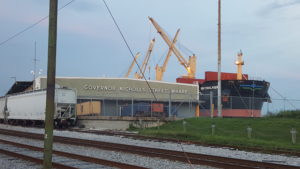
- Classify dangerous goods and identify proper shipping names of dangerous goods.
- Pack dangerous goods.
- Mark, label, or placard packages containing dangerous goods.
- Load or unload Cargo Transport Units.
- Prepare transport documents for dangerous goods.
- Offer dangerous goods for transport.
- Accept dangerous goods for transport.
- Handle dangerous goods in transport.
- Prepare dangerous goods loading or stowage plans.
- Load or unload dangerous goods into or from a vessel.
- Carry dangerous goods in transport.
- Enforce or survey or inspect for compliance with applicable rules and regulations.
- Are otherwise involved in the transport of dangerous goods as determined by the competent authority. (In the U.S. the competent authority is the PHMSA/USDOT.)
4. Is IMO dangerous goods training required or recommended? As a Member State of the IMO, the U.S. is bound by treaty to enforce the regulations of the IMDG Code except where it contradicts its own regulations. The IMO mandates training for shore-based personnel but leaves the frequency of training and the verification of its effectiveness up to the competent authority of its Member States. In the U.S. the competent authority is the PHMSA/USDOT. The Hazardous Materials Regulations (HMR) of PHMSA/USDOT mandate both initial and triennial training for anyone directly responsible for the safe transportation of hazardous materials. Therefore, this same training frequency is required of shore-based personnel involved in the transport of dangerous goods by vessel. In short: PHMSA/USDOT will enforce the training requirements of the IMDG Code within the U.S. making such training a requirement for compliance and not a recommendation.
5. Is it OK for me to comply with the IMDG Code within the U.S. or is it approved for use solely in international waters? As an international body of the United Nations the IMDG Code and all of its regulations are the law in international waters. As a Member State of the IMO the U.S. must enforce its regulations within the U.S. unless it contradicts domestic transportation regulations. Further, Member States are encouraged to harmonize their domestic regulations with the international standard whenever possible. PHMSA/USDOT has authorized compliance with the IMDG Code for the transport of HazMat/dangerous goods that originate within the U.S., are shipped to the U.S., or are transported through the U.S. or its territorial waters. This authorization for use can be found in the Hazardous Materials Regulations at 49 CFR 171.22, §171.23, & §171.25 along with the restrictions and limitations on that use.
6. What does the IMO consider a dangerous good? According to the International Convention for the Safety of Life at Sea, 1974 (SOLAS),
Dangerous goods mean the substances, materials and articles covered by the IMDG Code.
In practice, this means any one of the following from the IMDG Code:
- Identified by name in the Dangerous Goods List.
- Meets the criteria of one or more hazard classes.
- Identified as a marine pollutant or meets the criteria of a marine pollutant.
The international regulations use the term dangerous good whereas the Hazardous Materials Regulations within the U.S. use the term hazardous material.
7. What is the competent authority referred to in the IMDG Code? The competent authority is defined in the IMDG Code:
Competent authority means any body or authority designated or otherwise recognized as such for any purpose in connection with this Code.
Within the U.S. the competent authority for the IMDG Code is the Pipeline and Hazardous Materials Safety Administration (PHMSA) within the U.S. Department of Transportation (USDOT).
8. Am I required to have IMO dangerous goods training in order to ship dangerous goods by vessel? Yes, if the dangerous goods are to be transported in international waters. Initial and triennial training for shore-based personnel involved in the transport of a dangerous good by vessel is a requirement of the IMDG Code and will be enforced the PHMSA/USDOT for any shipment that begins, ends, or is shipped through the U.S. or its territorial waters.

10. Is it possible to transport a dangerous good by vessel without being subject to the IMDG Code? There are at least two instances when the transport of HazMat/dangerous goods by vessel would not be subject to international regulation:
- The entire transport remains entirely within the territorial waters of the U.S. and never enters international waters or the territorial waters of another nation (state).
- The transportation is directly from one U.S. location to another and while it passes through international waters it does not enter the territorial waters of any other nation (state).
In either of the above situations compliance with the Hazardous Materials Regulations of PHMSA/USDOT would be the only acceptable option to not complying with the IMDG Code.
11. What are U.S. territorial waters? For the purposes of the regulations for the transportation of dangerous goods by vessel, both international and domestic, the U.S. territorial waters are twelve (12) nautical miles (22.2 km; 13.8 mi). Read for more information: Territorial Waters.
12. How often must an employer provide dangerous goods training for shore-based personnel required by the IMO? Training for shore-based personnel who are concerned with the transport of a dangerous good by vessel must receive initial training within 90 days of beginning a regulated job function and every three years thereafter. This training frequency is not specifically indicated in the IMDG Code which instead refers to training provided “upon employment” and that it be “periodically supplemented with refresher training…” However, the reference to the competent authority (PHMSA/USDOT within the U.S.).
13. How often is the IMDG Code published? The IMDG Code is published every two years.
14. What is the current edition of the IMDG Code? As of this writing the current edition of the IMDG code is either the 2014 Edition; incorporating Amendment 37-14 or the 2016 Edition; incorporating Amendment 38-16. Use of the 2014 Edition for compliance was voluntary in calendar year 2015, mandatory in 2016, and again voluntary in 2017. The 2014 Edition will no longer be acceptable for determining compliance in 2018. The 2016 Edition may be used to determine compliance in 2017, is mandatory for compliance in 2018, and will again be voluntary in 2019. Please refer to the IMDG Code Amendment Cycle.
15. Must IMO training for shore-based personnel be provided by a certified or approved instructor? No it does not. As noted elsewhere on this page, the IMDG Code does not contain many requirements for dangerous goods training for shore-based personnel except that it must be done and to refer to the authority of the competent authority.
